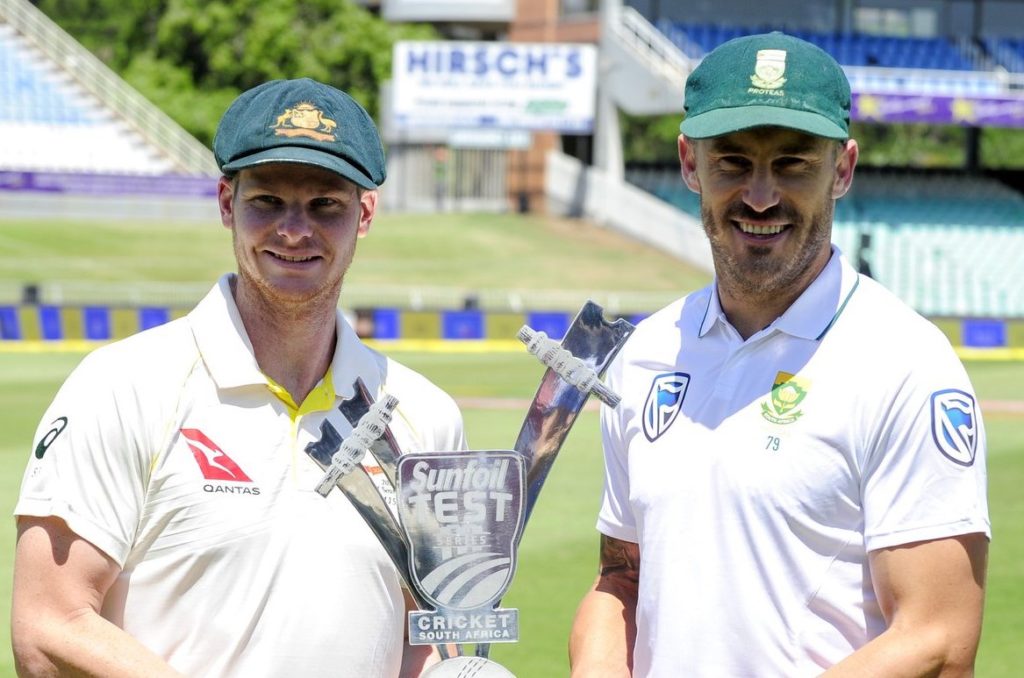Former Proteas captain Faf du Plessis doesn’t think Steve Smith “did much wrong” when Australia tampered with the ball at Newlands in 2018.
During the match, Cameron Bancroft was caught by TV cameras trying to rough up one side of the ball with sandpaper to make it reverse swing.
Skipper Smith and vice-captain David Warner were found to be involved and all three received lengthy bans from Cricket Australia. Smith also lost the captaincy to Tim Paine.
In his book, ‘Faf: Through Fire’, Du Plessis sympathises with Smith and Bancroft.
“Personally, I don’t think Steve Smith did much wrong,” he writes. “It’s no secret that all cricket teams want the ball to reverse. Not everyone knows how to accomplish this, especially not inexperienced players. But everyone knows it’s wrong to change the condition of the ball. We, too, have pushed those boundaries.
“Steve Smith and I have never been friends but we always played a hard game against each other, and Steve had been willing to defend me publicly in 2016 when ‘Mintgate’ broke,” wrote Du Plessis, referring to his own ball-tampering saga when he was caught on camera sucking on a sweet during the second Test against Australia in Hobart in 2016.
“I texted him that evening [in Cape Town]: ‘Message of support. Gone through this myself. It is a terrible experience when they attack your character. Hang in there. It will blow over.’
“He responded, ‘Thanks mate!’ To which I replied, ‘There will be a s***storm for a while. But stay strong.’
“I have tremendous sympathy for what he [Bancroft] went through. This is what happens in a team when the culture of belonging is restricted to performance and when players are made to believe that they need to prove themselves at any cost before they feel accepted.”
Du Plessis says the Proteas had suspected Australia of ball-tampering long before Sandpapergate.
“During the first Test in Durban, the Australian pace attack had got the ball to reverse insanely,” he writes.
“Mitchell Starc claimed nine wickets and, although I regard him as one of the best proponents of reverse-swing bowling I have ever seen or faced, those deliveries in Durban were borderline unplayable.
“He would come in around the wicket with a badly deteriorated ball and get it to hoop past us.
“Our balls had also reversed but not nearly as much as theirs.
“We suspected that someone had been nurturing the ball too much to get it to reverse so wildly, and we watched the second Test at St George’s through binoculars, so that we could follow the ball more closely while Australia was fielding.
“When we noticed that the ball was going to David Warner quite often – our changing room must have looked like a birdwatching hide as we peered intently through our binoculars.
“There was a visible difference between how Mitchell Starc got the ball to reverse in the first Test in Durban and the final Test in Johannesburg. We now know that there was an obvious reason for that.
“I’m not mentioning this from atop a high horse,” Du Plessis adds. “In the past, we have also been found guilty of employing unorthodox methods to get the ball to reverse swing.
“In our team, we just thought, ‘Nah! Ball-tampering and reverse swing have always been there’. In fact, it was probably more prevalent when camera technology wasn’t as good as it is today.”







